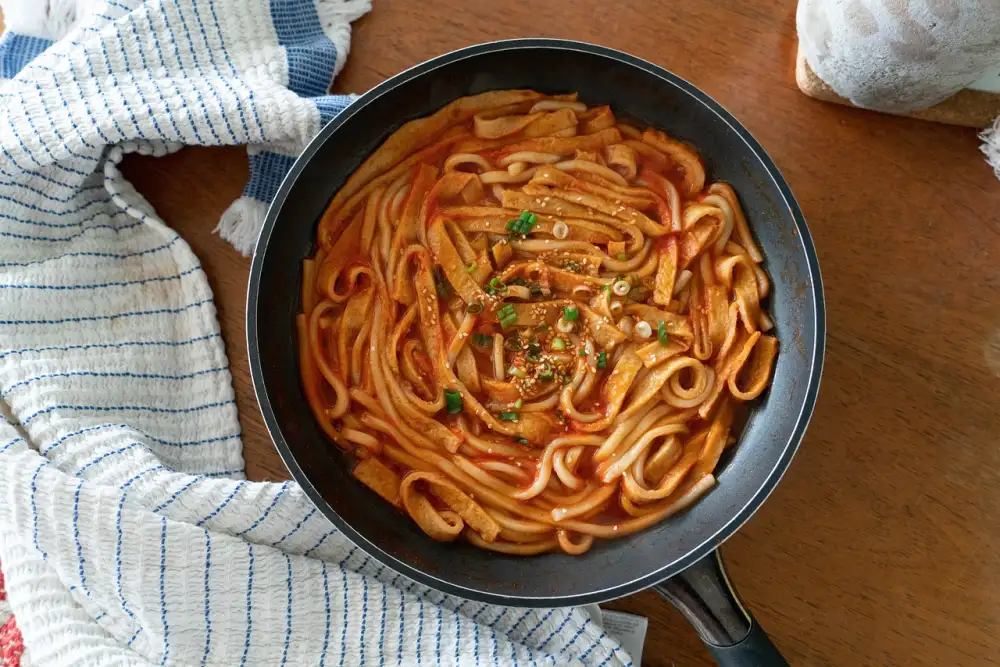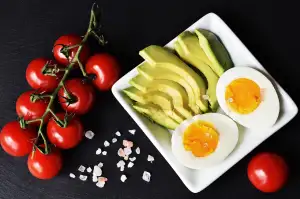Spice Up Your Kitchen with Gochujang: A Flavorful Korean Condiment Recipe Guide

Gochujang is a staple in Korean cuisine, known for its rich umami flavor and spicy kick. This fermented chili paste is made from red chili powder, glutinous rice, fermented soybean powder, barley malt powder, and salt. Its complex flavor profile adds depth to dishes and can be used as a marinade, sauce, or seasoning. Gochujang's versatility makes it a popular choice for both traditional Korean recipes and modern fusion dishes. Its deep red color and bold taste make it a must-have condiment in any kitchen looking to elevate its flavors.
History and Origin of Gochujang
Gochujang, a staple in Korean cuisine, has a rich history dating back to the early 18th century. It is believed to have originated in the southern regions of Korea, particularly in the Sunchang County of North Jeolla Province. Originally, gochujang was made by fermenting soybeans, red chili powder, glutinous rice, and salt in large clay pots called onggi. This fermentation process could take months to develop the deep umami flavor and spicy kick that gochujang is known for today. Over time, different regions in Korea developed their own variations of gochujang, each with unique flavors and levels of spiciness.
Ingredients used in Gochujang
Gochujang, a staple in Korean cuisine, is made from a blend of fermented soybeans, glutinous rice powder, red chili powder, and salt. The key ingredient that gives Gochujang its distinct umami flavor is meju (fermented soybean blocks). These blocks are mixed with rice flour and chili powder before being left to ferment for several months to develop its signature complex taste. Some variations may include additional ingredients like barley malt powder or sweeteners such as sugar or honey to balance the heat from the chilies. The traditional fermentation process not only enhances the flavor but also contributes to Gochujang's rich nutritional profile.
Health Benefits of Gochujang
Gochujang, the popular Korean condiment, offers various health benefits due to its key ingredients. It contains red chili peppers, which are rich in capsaicin—a compound known for its anti-inflammatory and metabolism-boosting properties. Additionally, garlic in gochujang provides immune-boosting benefits, while fermented soybeans contribute gut-friendly probiotics. Studies suggest that consuming gochujang may help reduce cholesterol levels and improve heart health. Its combination of ingredients makes it a flavorful and nutritious addition to your diet.
How to Use Gochujang in Recipes
Gochujang can be used in a variety of dishes to add a depth of flavor and a spicy kick. It is commonly used as a marinade for meats such as chicken, beef, or pork. Simply mix gochujang with soy sauce, garlic, and other seasonings for a delicious marinade.
Gochujang also works well as a condiment or dipping sauce. Mix it with mayonnaise or yogurt for a creamy and spicy dip for vegetables or fries. It can also be added to soups, stews, stir-fries, and even salad dressings to enhance the overall taste profile of the dish.
For those looking to spice up their snacks, try mixing gochujang with melted butter and drizzling it over popcorn or roasted nuts for a unique and flavorful twist. The possibilities are endless when it comes to incorporating gochujang into your recipes!
Popular Gochujang Recipes to Try
1. **Gochujang Chicken** - Marinate chicken pieces in a mixture of gochujang, soy sauce, garlic, and honey before grilling or baking for a spicy and flavorful dish.
2. **Bibimbap** - A traditional Korean rice bowl topped with sautéed vegetables, a fried egg, and gochujang sauce for a burst of heat and umami flavor.
3. **Tteokbokki** - Spicy stir-fried rice cakes cooked in a savory gochujang-based sauce with fish cakes and boiled eggs, creating a popular Korean street food favorite.
4. **Gochujang Pork Belly** - Slow-cooked pork belly glazed with a sweet and spicy gochujang marinade for tender and succulent meat bursting with bold flavors.
5. **Gochujang Ramen** - Upgrade your instant ramen by adding gochujang paste along with vegetables, protein, and an egg for a quick and satisfying meal packed with depth of flavor.
These recipes showcase the versatility of gochujang in both traditional Korean dishes and modern fusion cuisine, offering a unique twist to your culinary creations.
Where to Buy Gochujang
Gochujang, a staple in Korean cuisine, is readily available in many grocery stores and Asian markets worldwide. You can find it in the international foods aisle or specifically in the Korean section of the store. Additionally, online retailers like Amazon, Walmart, and specialty Asian food websites offer a wide selection of Gochujang brands for purchase. Look for reputable brands like Chung Jung One, Haechandle, or Sempio for authentic and high-quality Gochujang products. Whether you prefer traditional fermented Gochujang or a milder version, there are plenty of options to choose from when looking to buy this versatile Korean condiment.
Tips for Storing Gochujang
When storing gochujang, it is important to keep it in an airtight container to prevent exposure to air and moisture, which can cause it to dry out and lose its flavor. It is best stored in the refrigerator to maintain its freshness and extend its shelf life. Make sure the lid is tightly sealed after each use to avoid any contamination. Additionally, storing gochujang away from direct sunlight will help preserve its color and taste. Following these storage tips will ensure that your gochujang remains flavorful and ready to use in your favorite dishes for an extended period of time.
In conclusion, Gochujang is a versatile and flavorful Korean condiment that can elevate the taste of any dish. Its rich history, unique ingredients, and numerous health benefits make it a must-have in any kitchen. Whether you are a fan of spicy food or looking to add depth to your recipes, Gochujang is sure to impress your taste buds. Experiment with different dishes and explore the world of Korean cuisine with this delicious and iconic ingredient. So, spice up your kitchen with Gochujang and experience the bold flavors it has to offer!
Published: 10. 03. 2024
Category: Recipes



